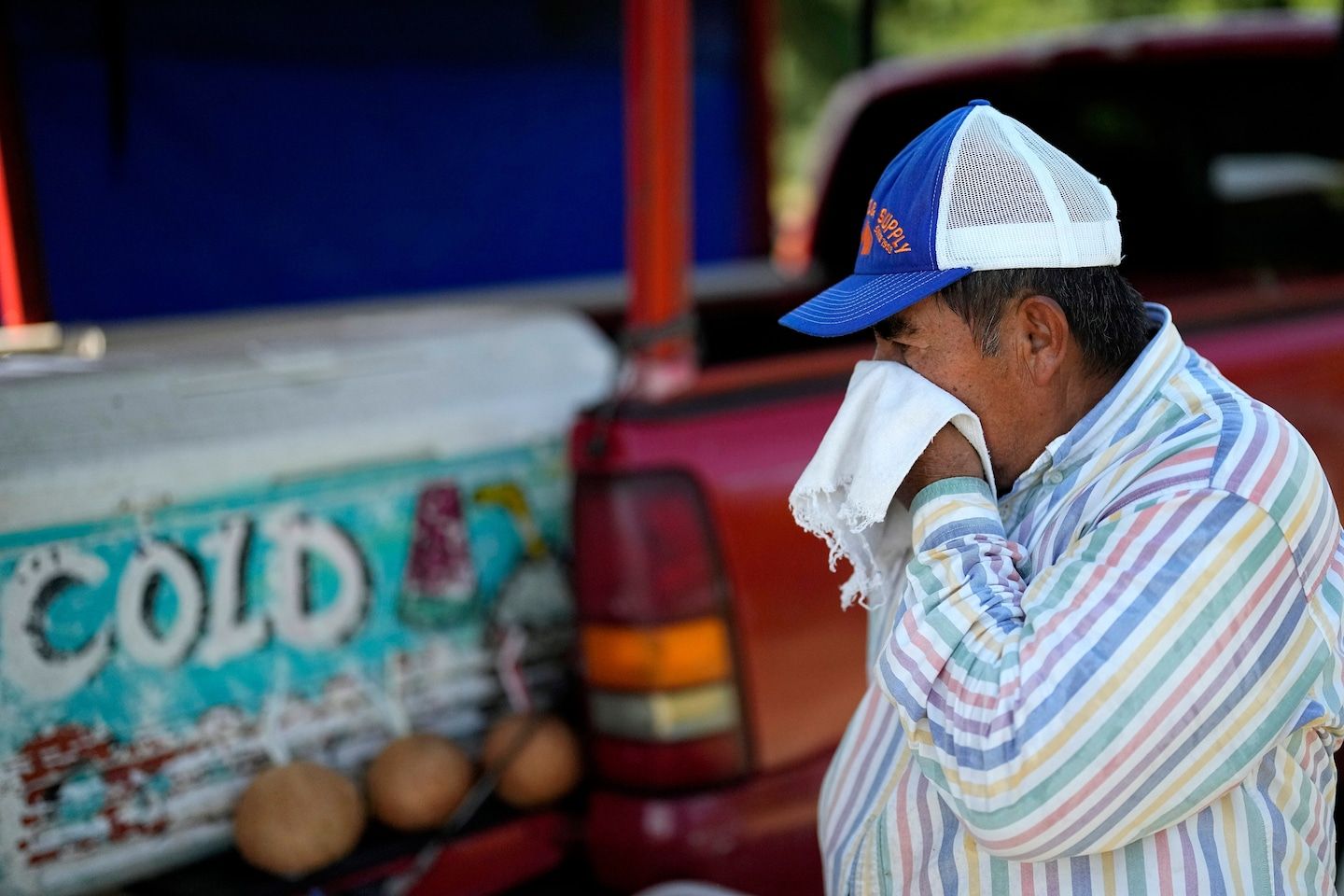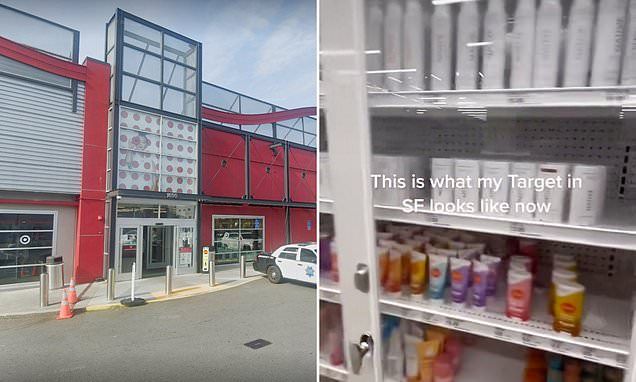Texas heat wave means life revolves around air conditioning
Listen 8 min Comment on this story Comment Gift Article Share
HOUSTON — Carmen Ramos’s life revolves around air conditioning, for herself and her family. Ramos, 28, worries about her husband, who works outdoors pouring concrete driveways. Ramos knows how dangerous the heat can be: Last month, a 46-year-old Houston construction worker collapsed and died, one of 14 who have died of heat-related causes across Texas this summer because of the Southwest heat wave.
Ramos is five months pregnant, so she also worries whether the heat will affect the baby girl she plans to name Christy. Each week, she leaves the family’s air-conditioned apartment to attend free prenatal classes, waiting outside — sometimes for nearly half an hour — for the air-conditioned bus to arrive. She’d rather take classes online, but she can’t find any that are free.
Most of all, Ramos worries about her 8-year-old son, Anthony. When the family first arrived in the United States from Honduras four years ago, Anthony seemed to be adjusting well. He learned English and excelled at school. Then, he was shut in by the pandemic in 2020 and hasn’t liked venturing far since — especially in the heat. In the evenings, neighboring children play soccer between buildings in the apartment complex, but Anthony won’t join them. He likes the apartment’s central air, even though the second-floor apartment gets hot by afternoon.
Advertisement
“He doesn’t like to go out,” Ramos said. This week the boy sat on his bicycle in the living room, watching cartoons.
Air conditioning permeates every aspect of life in the metro area of about 6.7 million. Access to reliable, quality air conditioning has become a lifeline for many during the latest heat wave, among several worldwide that produced the hottest June globally and the Earth’s hottest day on record July 4.
It’s the cornerstone of Houston’s heat emergency plan. When the heat index — a combination of temperature and humidity — reaches 108 for two straight days, a level it exceeded this week, the city opens cooling centers in air-conditioned libraries and community centers and urges the elderly and children to stay inside during the afternoon. Downtown skyscrapers are linked by air-conditioned underground tunnels populated by restaurants and stores, eliminating the need to step outside.
Officially, almost all homes and apartments in the South have air conditioning, more than 98 percent of homes in Texas, according to census data. But for many, air conditioning is precarious and jobs force them outside, limiting the relief. That is particularly true in the hottest neighborhoods.
Advertisement
Three years ago, researchers measured Houston temperatures and found they varied up to 17 degrees between neighborhoods, a disparity that often correlates with income, said John Mejia, an associate research professor with the nonprofit Desert Research Institute who participated in the research that seeks ways the city can help neighborhoods cool off. Mejia is based in Houston’s Heights neighborhood, one of the cooler areas.
Among the hottest neighborhoods was Gulfton, where Ramos lives. Its name belies the fact that the neighborhood is landlocked, about 50 miles from the Gulf of Mexico. The low-income migrant and refugee enclave is an “urban heat island,” Mejia said, where temperatures are driven up by a plethora of concrete and dark-roofed apartments, and the scarcity of shade-providing trees and other vegetation.
Houston’s humidity, about 80 percent at its worst this week, makes the city more difficult to effectively air-condition, compared with drier Southwest cities also hard-hit by the latest heat wave, such as Las Vegas and Phoenix. Home and car windows fog with condensation. Step outside, and so do sunglasses. A film of moisture coats exposed skin. Everything overheats: phones, cars, pets, children.
Advertisement
“The conditions are really unbearable,” Mejia said.
Ironically, air conditioners also contribute to heat and climate change because they are reliant on fossil fuel power and refrigerants, said Stan Cox, a research fellow at the Land Institute and author of “Losing Our Cool.”
“It is a vicious cycle,” Cox said. “It gets hotter, people run the air conditioning, which ensures future summers will be even hotter.”
In southern neighborhoods like Gulfton, the hum of air conditioners rivals that of cicadas.
Most strip mall businesses, like homes, are air-conditioned, from Afghan Fashion Connection to Latinas Sports Bar and Chain Chatt ’N Paan. Immigrants from Africa, Asia and Central America who grew up without air conditioning in cooler coastal or mountain areas said they now depend on it, although the type and quality varies.
Advertisement
“Not all the air conditioners are the same. Some don’t have central air, and they suffer the most,” said Carmen Lopez, 90, a Venezuelan American who spends most days with fellow seniors at Gulfton’s community center, a city cooling center where the thermostat is set at 74 degrees.
Nearby sat Elisabeth, 72, a retired Salvadoran hospital housekeeper who asked to be identified only by her first name for fear of getting evicted. She said the window units in her government-subsidized senior complex don’t cool her bedroom or those of her neighbors. She’s applied to move to a complex with central air, she said, but there is a waiting list.
Rosa Martinez, 75, has a rickety window unit in the cramped living room of a two-bedroom Gulfton apartment she shares with three other people, paying $300 in monthly rent. The Honduran immigrant, who retired after working concessions at local arenas, said that when she plugs in her electric teapot or other appliances, the electricity often goes out. The window unit is also so loud that sometimes she is forced to turn it off at night, as she had to during this week’s heat.
She gets frustrated when she visits neighbors who have been upgraded to central air and live in cool comfort even though they pay the same rent: “They don’t die of the heat.”
Abdul Ghiasi, 35, arrived last month with his family from Kabul, where he worked as a U.S. Army interpreter. Electricity was so unreliable in Afghanistan, he said, that air conditioning wasn’t an option growing up. In his new neighborhood, even the mosque is air-conditioned during daily prayers.
Advertisement
Ghiasi said he shuts off his Gulfton apartment’s window unit in the relatively cooler morning and evening “because of the expense.” He had a job interview the next day and hoped for a side benefit to getting the position: more air conditioning.
“If I have a job, it won’t matter — I will be able to run air conditioning,” he said Wednesday while walking behind his 3-year-old son Abdullah, who was riding a bicycle.
An Afghan neighbor pulled up in his air-conditioned SUV to offer Ghiasi and his family a ride, but he declined. Abdullah wanted to ride his bike, at least until the heat became too much. Ghiasi said he was trying to keep his son healthy while tracking Houston’s daily heat advisories, which kept getting extended.
“You see he is sweating,” Ghiasi said as Abdullah sped around him, bangs slicked to his forehead.
At Gulfton’s main park, a sprawling 32-acre complex, shade was sparse. The air-conditioned indoor gym was closed. So was the new outdoor soccer field. It was sweltering by afternoon, even under the few oak trees. The splash pad’s water wouldn’t turn on, disappointing 9-year-old Axel Arias.
Axel had worn his swimsuit to the park, hoping to cool off. Instead, his family ate lunch on a picnic table under one of the oaks. Axel’s mother said she has kept him home from football practice in recent weeks because of the heat. He enjoys the central air but misses his friends, kicking the ball around and winning practice games.
Advertisement
“Maybe in August,” said Jessica Arias, 30, a restaurant cook.
She worried Axel was spending too much time inside on his Nintendo Switch and cellphone, while his 5-year-old brother was on his tablet.
“It’s very important now because they’re not in school — they need to be outside,” she said.
On a nearby covered basketball court, Daniel Rodriguez was finishing two hours of games with three Gulfton boys he mentors, two 10-year-olds and an 11-year-old. Sometimes they go to the library, which has air conditioning. Today, they would have lunch in an air-conditioned restaurant. The boys were already dreaming about Oreo and M&M shakes.
“It’s a hot one,” said Rodriguez, 37. “So McDonald’s is going to be refreshing.”
Gift this article Gift Article
Source: The Washington Post


